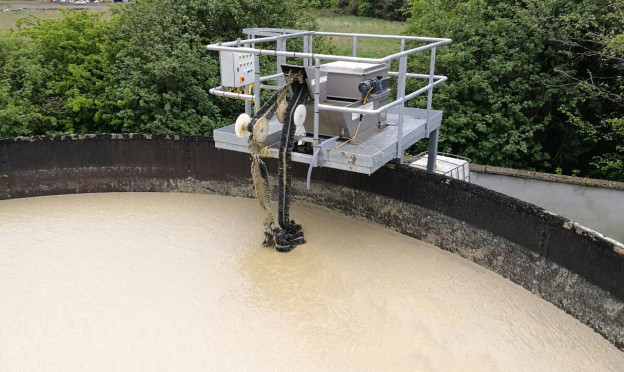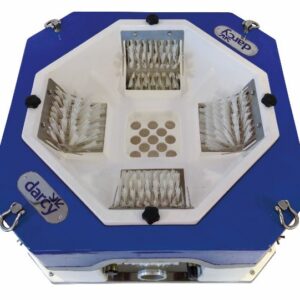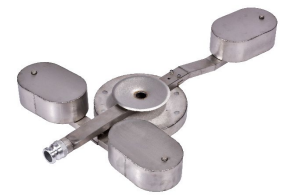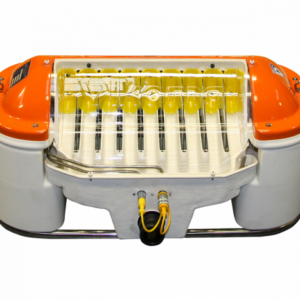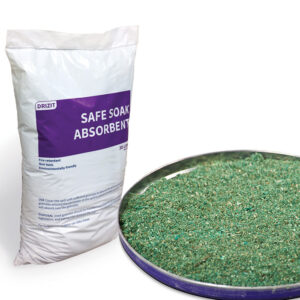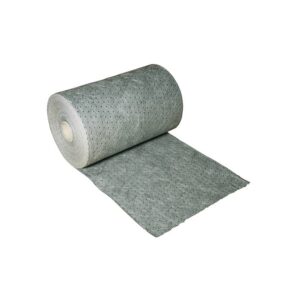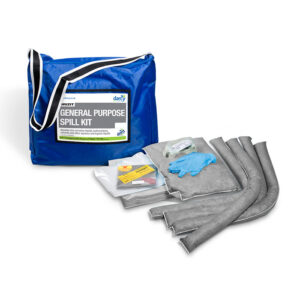Skimmer details
Rope mop skimmer systems typically incorporate an oil/water separator which allows any free water pick up to be returned to the effluent water allowing only oil to be gravity drained or pumped to the waste oil storage tanks nearby. This means the system can effectively operate 24 hours per day 7 days per week without any manual assistance ensuring peace of mind-clearing all visible surface oil contamination.
The skimmers can be powered either by an electric drive; air, hydraulic, or diesel options are available if required.
Mop details
The mops are manufactured from a special polypropylene fabric which is stitched to form a continuous loop. The mops are available in varying widths in black (for heavy sticky oils) and white (for light oils). They are available in lengths from 2m long to 120m long depending on the application.
Market sectors commonly using rope mop skimmers include:
- Ports and Harbours – General use and for emergency spill response
- Oil and Gas – Refining, storage, production
- Thermal Power – Oil and Coal-fired, Gas and Nuclear Power Stations
- National Grid – recovery of transformer oils and general spills
- Steel Production – steel mills and steel finishing industry
- Chemical and Pharmaceutical – All types of chemical works
- Airports – Both civil and military surface water run-off drains
- Product Storage – Aviation fuel tanks at airports and general product storage terminals for fuel oil, diesel, petrol etc
- Food Industry – To recover Fats Oils and Greases both animal and vegetable oils from the effluent water process
- General Industry – All manufacturing factories such as pipe manufacture, car factories and other where oil contaminates water processes and drains
- Specialist oil spill contractors – Built as emergency spill response equipment to aid in the oil spill contractor market
- Groundwater remediation contractors – can be used for all soil and groundwater contaminated areas using borehole skimming techniques
- Water Utilities – sewage treatment works for primary and tertiary recovery of oily wastes.
